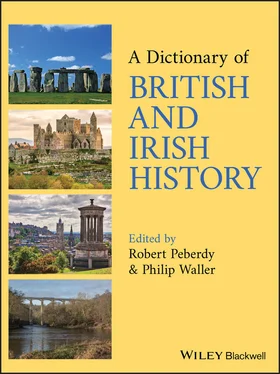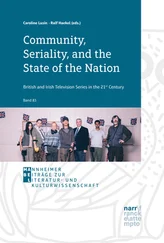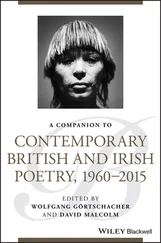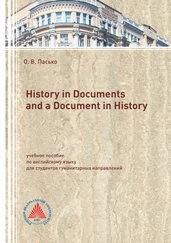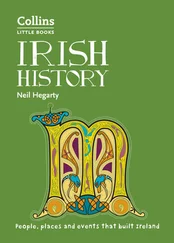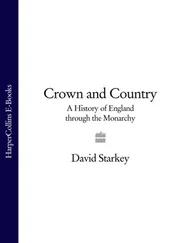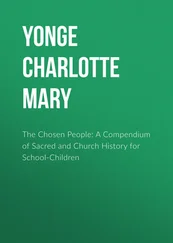BBC TELEVISION was extended to Wales in 1952, serving S Wales and SW England, as did the commercial company Television Wales and West (TWW) from 1958. Other areas were covered by the commercial Wales (West and North) Television from 1962, and in 1964 Wales received a BBC service (BBC Wales Television). The paucity of Welsh‐language programmes on BBC Wales and HTV (Harlech TV, successor to TWW from 1968) caused protests. In 1979 political parties agreed to provide a Welsh‐language channel, but the elected Conservative government reneged. The intention was reinstated after Gwynfor EVANS threatened to undertake a hunger strike. S4C, the Welsh Fourth Channel, was inaugurated on 2 Nov. 1982.
In 2017 there were four Welsh television services (BBC1 Wales, BBC2 Wales, ITV Cymru Wales, S4C), three national radio stations (BBC Radio Wales, BBC Radio Cymru, BBC Radio Cymru 2), 14 commercial radio stations, and community radio stations.
BROCHA type of multi‐storey, circular stone house found in the northern Hebrides, northern Scotland, Orkney and Shetland. Its origins lie in the early IRON AGE (from c.700 BC), but brochs were common in the 1st centuries BC and AD. Compared with WHEELHOUSES, they may represent élite dwellings. See also PREHISTORIC BRITAIN, HOUSING. BRONZE AGE, BRITAINThe period c.2300– c.700 BC, when copper, bronze and gold artefacts were produced. Developing out of the NEOLITHIC, it is often divided into Early (to c.1600 BC), Middle (to c.1200 BC) and Late phases. Evidence for the Early Bronze Age is dominated by STONE CIRCLES, rock art, ROUND BARROWS and HENGE MONUMENTS. Later phases are commonly traced through field systems and other land divisions. Increasingly varied forms of metalwork – weaponry, tools and bodily ornaments – were used, displayed and circulated during the period. Succeeded by the IRON AGE. BRONZE AGE, IRELANDThe period c.2300–to c.700 BC, often divided into Early (to c.1700 BC), Middle (to c.1200 BC) and Late phases. Apart from the many metal objects that give the period its name, the earlier phases are marked by single burials containing food vessels and cinerary urns, while the later phase has few burials but numerous settlements. It developed from, and overlapped with, the CHALCOLITHIC PERIOD and was succeeded by the IRON AGE. BROOKE, ALAN(b. 23 July 1883 at Bagnères‐de‐Bigorre, France; d. 17 June 1963 at Hartley Wintney, Hampshire, England, aged 79). A soldier in the British Army, Brooke became chief of the imperial general staff in Dec. 1941, playing a major part in formulating Allied strategy in WORLD WAR II. His relations with Prime Minister Winston CHURCHILL were stormy but productive. In 1945 he retired and was created Lord Alanbrooke (created Viscount Alanbrooke 1946). BROOKE, BASIL(b. 9 June 1888 at Colebrooke Park, Co. Fermanagh, Ireland; d. 18 Aug. 1973 at Colebrooke Park, Northern Ireland, aged 85). Brooke succeeded as baronet in 1907, and was an ULSTER UNIONIST PARTY member of Northern Ireland's House of Commons 1929–68. As prime minister, from 1 May 1943, he increased war‐related industrial production (1943–5) and co‐operated with the social policies of Britain's post‐war Labour government (1945–51), introducing free health care and secondary education (1946–8). After southern Ireland became a republic (1949) he obtained the Ireland Act, whereby the UK Parliament guaranteed Northern Ireland's position within the UK. Brooke sought to maintain Unionist cohesion and ignored Catholic grievances, perpetuating sectarianism. Northern Ireland's longest‐serving prime minister, he resigned (25 March 1963) because of increasing unemployment and the electoral threat from the Northern Ireland Labour Party. He was created Viscount Brookeborough (1952). See also NORTHERN IRELAND; WELFARE STATE. BROOKEBOROUGH, VISCOUNTsee BROOKE, BASIL BROOKE FAMILY
The English family who ruled Sarawak in BORNEO, 1842–1946. James Brooke (1803–68), a soldier and adventurer, helped to suppress a rebellion in the Sarawak River area (1840). In return, he was made governor (1841) by a local rajah (prince) and then installed as rajah (1842), under the overlordship of the sultan of Brunei. Ruling with a government of natives and white officers, he introduced laws, encouraged trade, countered piracy, and explored the interior. He received the island of Labuan (1846), and additional land (1862).
James Brooke was succeeded in 1868 by his nephew Charles Brooke (1829–1917). He acquired more lands from the sultan of Brunei, and in 1888 allowed Sarawak to become a British PROTECTORATE. In the early 20th century he encouraged rubber cultivation. In 1917 he was succeeded by his son Vyner Brooke (1874–1963), who developed oil and introduced a written constitution (Sept. 1941) but was forced out by the Japanese (Sarawak occupied 1941–5). He ceded Sarawak to Britain in 1946. The Brookes were nicknamed ‘white rajahs’.
BROUGHAM, HENRY(b. 19 Sept. 1778 at Edinburgh, Scotland; d. 7 May 1868 at Cannes, France, aged 89). British WHIG politician, lawyer and popular educator. Brougham was a Whig MP 1810–12 and from 1816. He won popularity defending Queen CAROLINE (1820). Created Lord Brougham and appointed lord CHANCELLOR in 1830, he piloted the Great Reform Act through the House of Lords (1832). After losing office in 1834, he was never reappointed. (Lord MELBOURNE found his vanity insufferable.) Brougham wrote on numerous subjects and designed the four‐wheeled horse‐drawn carriage named after him. See also PARLIAMENTARY REFORM. BROWN, GEORGE(b. 2 Sept. 1914 at Lambeth, London, England; d. 2 June 1985 at Truro, Cornwall, England, aged 70). A van driver’s son, Brown became a trade unionist and LABOUR PARTY activist. Elected as an MP in 1945, he opposed the BEVANITES (1950s) and served as deputy leader of the Party (1960–70). Harold WILSON appointed him (1964) as the first economic affairs secretary, charged with economic planning and modernization of industry. He was British foreign secretary from 1966, but resigned (15 March 1968) over Wilson’s failure to consult him. Volatile and fond of drink, Brown lost his seat in 1970 and was created Lord George‐Brown. He joined the SOCIAL DEMOCRATIC PARTY in 1985. BROWN, GORDON
(b. 20 Feb. 1951 at Glasgow, Scotland). Leader of the LABOUR PARTY and British prime minister 2007–2010.
A student politician (at EDINBURGH University), lecturer and journalist, Brown became a Labour MP (1983) and Opposition spokesman. Though ambitious, he did not contest the 1992 Party leadership election; in 1994 he stood aside for rival Tony BLAIR ( see GRANITA ACCORD).
As chancellor of the Exchequer in Blair’s government from 1997, Brown delegated control of interest rates to the BANK OF ENGLAND and created the Financial Services Authority to regulate financial companies. Prioritizing economic stability, he regularly claimed to have abolished cycles of ‘boom and bust’. Against Blair, he blocked entry to the euro (European currency), and considerably directed domestic policy (e.g., introducing TAX CREDITS). He sought trade union support against Blair’s more inclusive approach ( see SPENCE AFFAIR). The government divided into ‘Brownites’ and ‘Blairites’.
When Blair resigned under pressure in 2007, the Labour Party enabled Brown to become leader without opposition. Succeeding as prime minister, he failed to exploit public popularity by holding a general election. In 2008–9 an international financial crisis triggered bank failures, increased unemployment and inflated the government’s deficit. Labour lost the 2010 election; Brown resigned as prime minister and Party leader. He left Parliament in 2015. See also MANDELSON, PETER; CAMERON, DAVID.
Читать дальше
